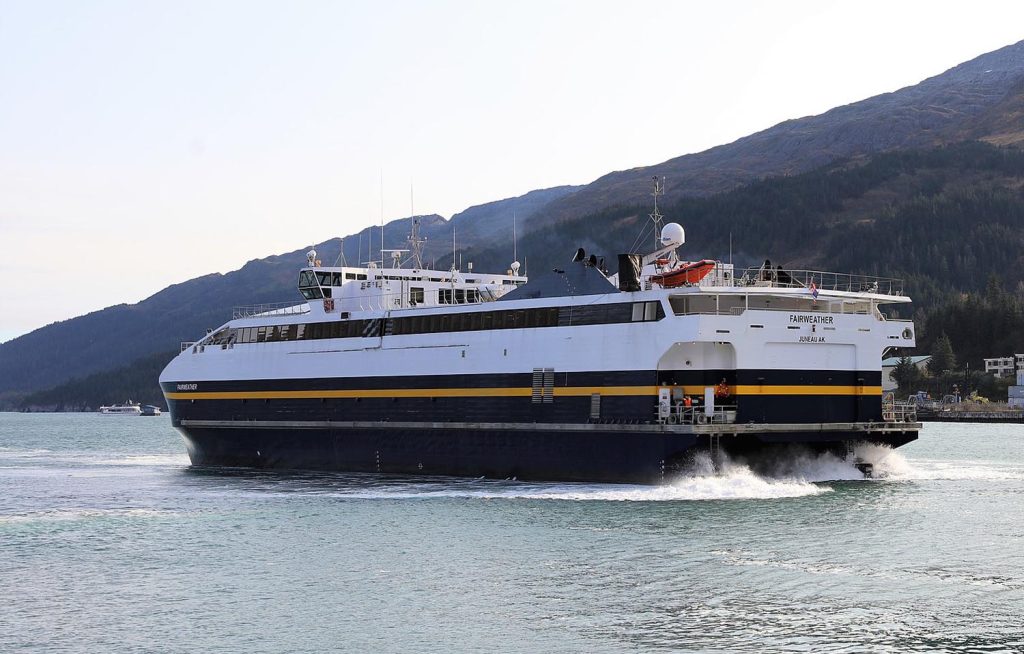Many RVers dream of traveling to Alaska, considering it the ultimate destination on their bucket lists. So we’ve created a series of articles to help you navigate the Last Frontier in a motorhome or travel trailer, in hopes that you can enjoy exploring the 49th state, as well!
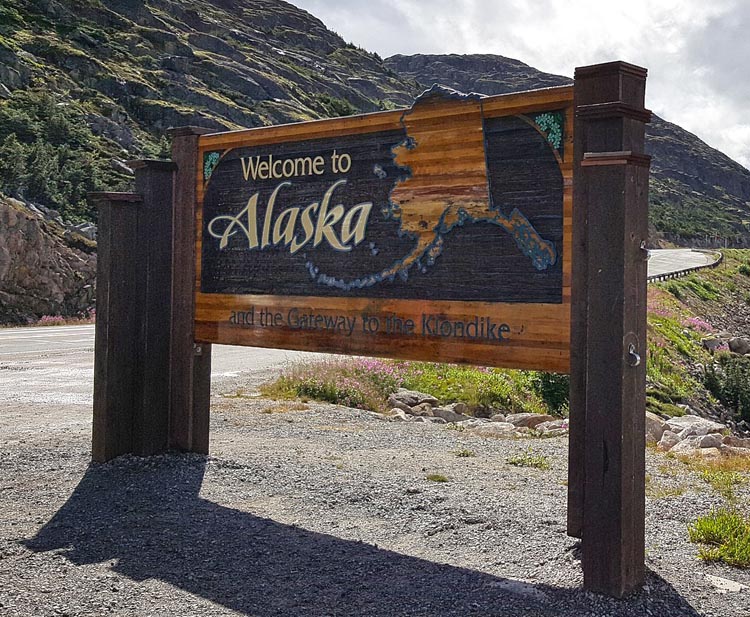
Today we’ll follow Seward Highway (Alaska 1) out of Anchorage south and east to:
Whittier
Here’s your chance to visit an entire town that lives under one roof—an unusual place, even by Alaska standards! Whittier is a port city approximately an hour from Anchorage, but a lifetime away from “average” in any vernacular.
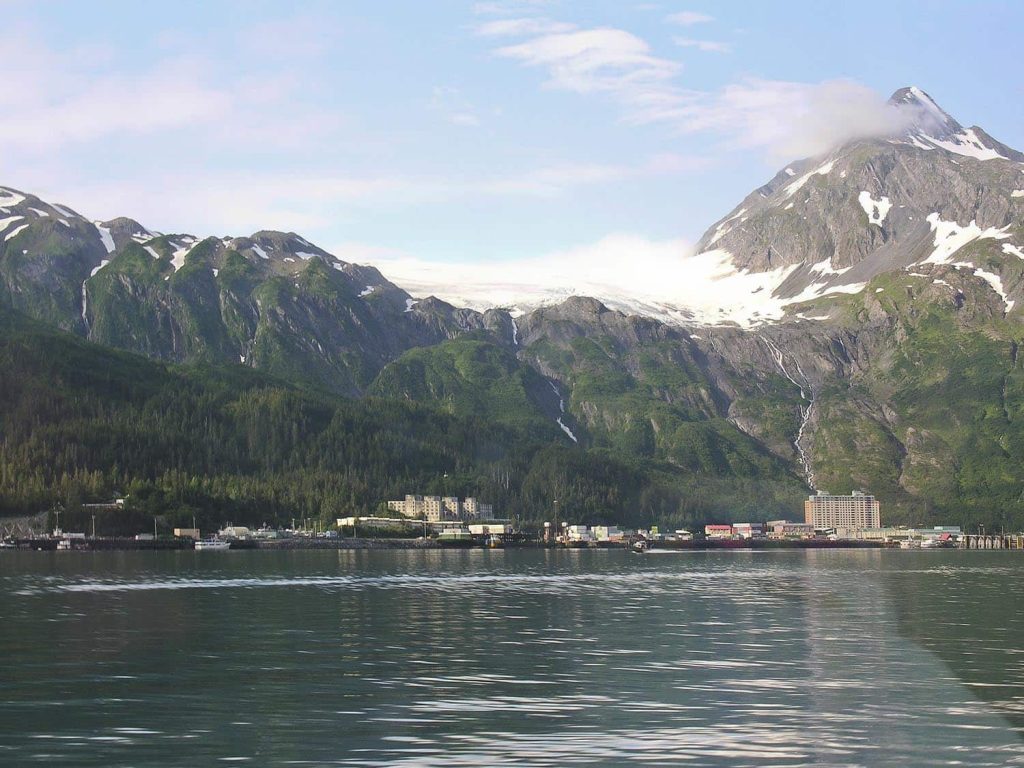
Let’s start with the fact that the only land access to the town is through a 2 ½ mile, single-lane tunnel through the mountains that closes every night at 10:30pm. Then add to that the fact that Whittier gets more moisture than any other town in Alaska and all of America at 198 inches a year. Couple that with consistent wind speeds in the area of about 60 mph, and it might explain why almost all of its 217 residents live in one building, with all city services located there as well. Who wants to walk to the post office or grocery store in frigid temperatures with high-velocity winds, when you can move the city hall, police station, library, supermarket, and health clinic into the bottom floor of your apartment building?
History
During World War II the US Army established a military base near Whittier Glacier, and with that construction came a railroad and port facility to bring soldiers into Alaska. The Anton Anderson Memorial Tunnel was blasted in quick fashion, as the Japanese bombing of Pearl Harbor made defense of the 49th state increasingly important, and shipping of supplies and troops by rail was a major priority.

Until 2000, the only way to travel to the town of Whittier was by rail—either as a foot passenger or by loading automobiles onto flatbed cars—or by boat. By the 1960s, the military had pulled out of the area, and the Port of Whittier became a destination for cruise lines and commercial boat traffic.
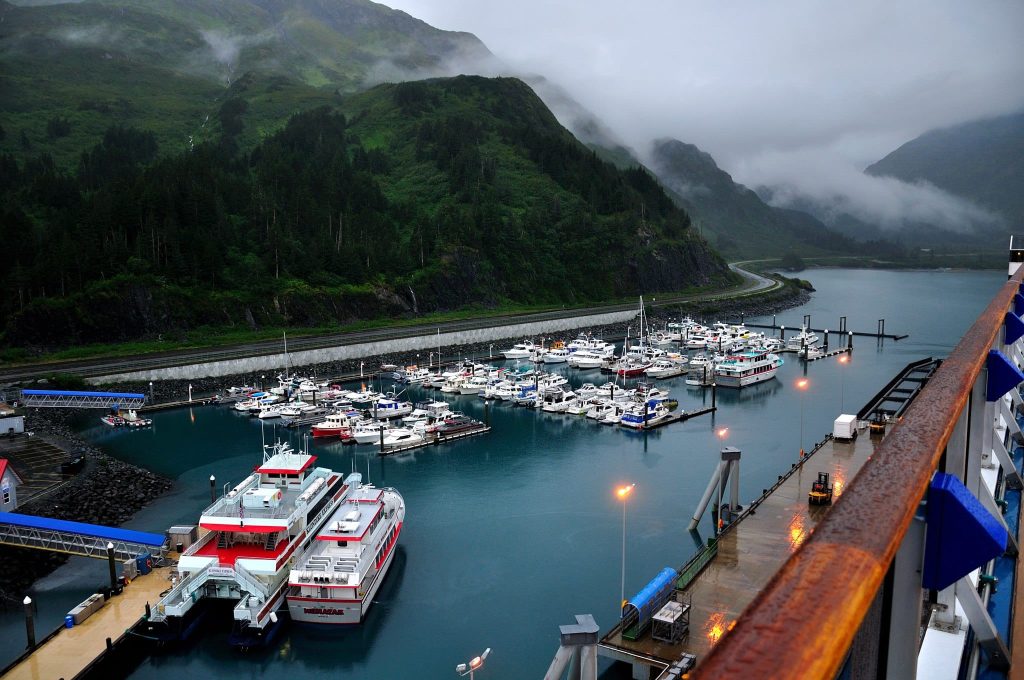
Today the town is still the terminus for the Alaska Railroad and several cruise ships dock in Prince William Sound, along with ferries traveling the Alaska Maritime Highway, but the expansion of the train tunnel to allow cars passage provided more access to a town surrounded by intense beauty and abundant wildlife. That’s when tourists discovered this secret gem.
Outdoor Activities
Whittier sits in the midst of mountainous terrain covered year-round with ice. These glaciers attach their tentacles in numerous valleys, terminating at water’s edge. Known as tidewater glaciers, they offer great hiking and ice climbing opportunities, as well as paddleboarding and kayaking in calm water along their boundaries. Follow the Portage Pass Trail to enjoy fantastic views and outdoor adventures like these all summer long.
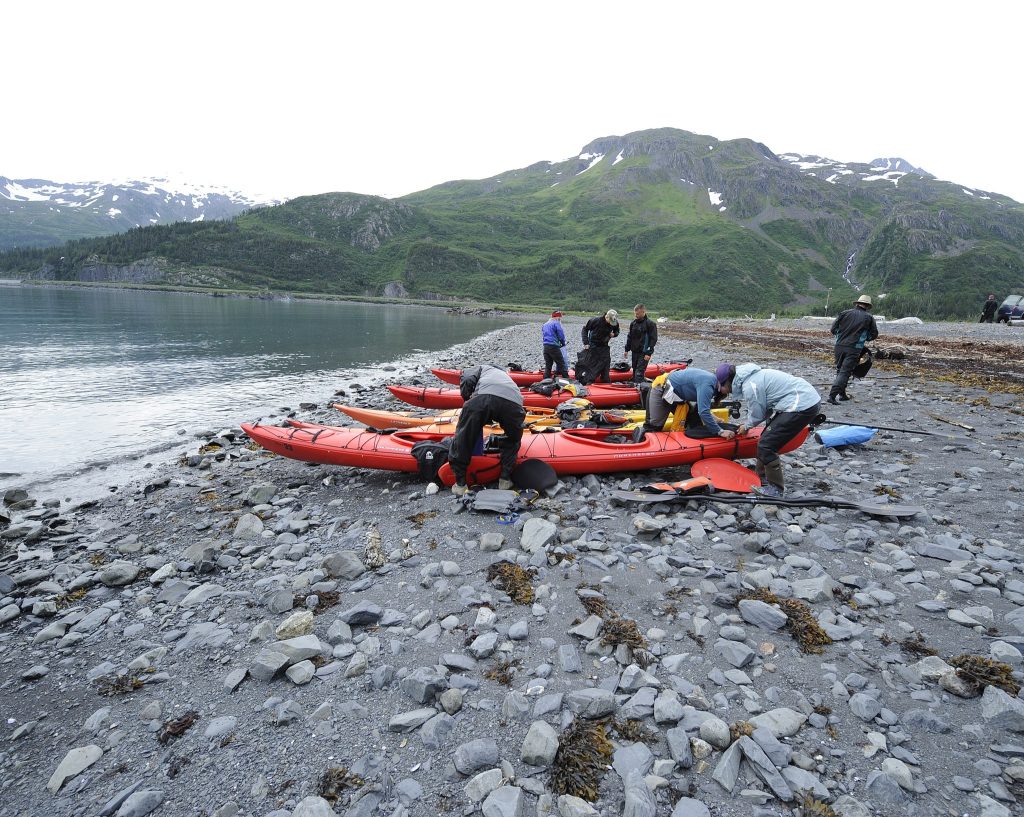
Three species of salmon are prevalent in areas rivers, so fishing is a pretty big deal here, and the town also has its own campground within walking distance of the marina. The sites are level and large enough to handle virtually any size RV, and tenting is allowed as well. Don’t discount dispersed camping. You’ll have a beautiful backdrop wherever you set up camp.

Restaurant selection in a town this small is pretty limited, with four choices during the summer season, so be prepared for a bit of time spent in line, or brown bag it in a scenic spot along the bay. You can also catch your own dinner, and fry it up at your campsite for an authentic Alaskan meal.
Where Are All the People?
Of course, the most curious thing about Whittier is the location of its population. Almost all live in the colorful Cold War era building known as Begich Towers. Wander into its lobby to see just how an entire town can function from within its walls. The church is in the basement, school is next door and accessible through a tunnel, and you’ll probably run into half of the town’s residents in the post office or laundromat down the hall.
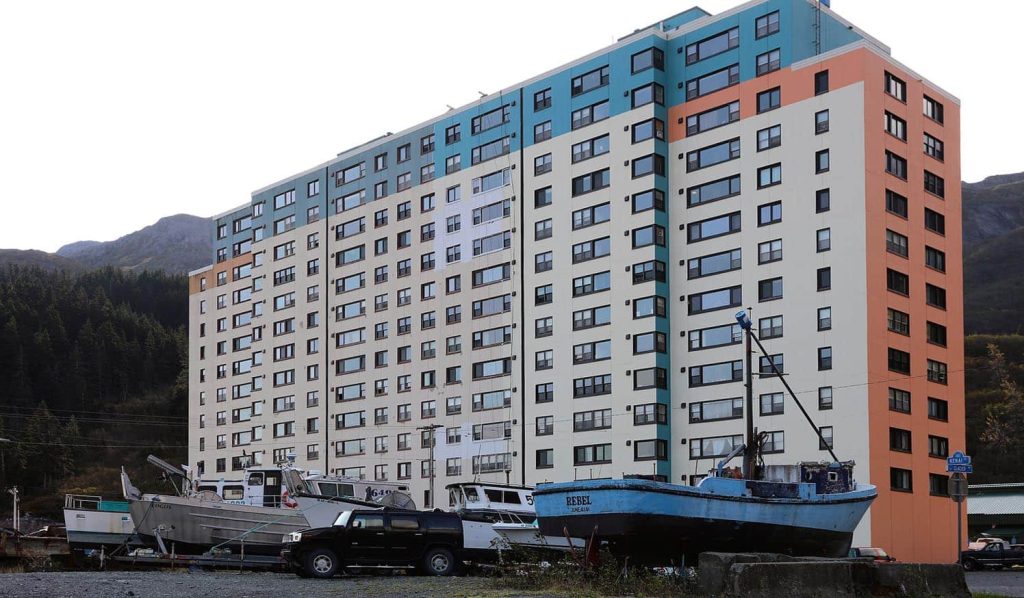
I wondered how many of them ended up here—at the virtual end of the road—and found that many residents were mobile, coming to Whittier for a year or two, then moving on. However, there are quite a few who have raised generations in this isolated valley. Some came years ago to work at the canneries for a summer but stayed for 35 years. Others relish the tight community they have built, and most cherish the rugged outdoor environment surrounding them.
Room with a View
If you’d prefer a little pampering while you’re in Whittier, rent a room at Glacier View Condo Suites, a B&B on the top two floors of Begich Towers. It’s a great way to experience daily life “in” Whittier and take in the amazing views of whales breaching in the harbor or mountain goats clinging to the side of nearby peaks. Each room comes with a pair of binoculars and outstanding scenery.
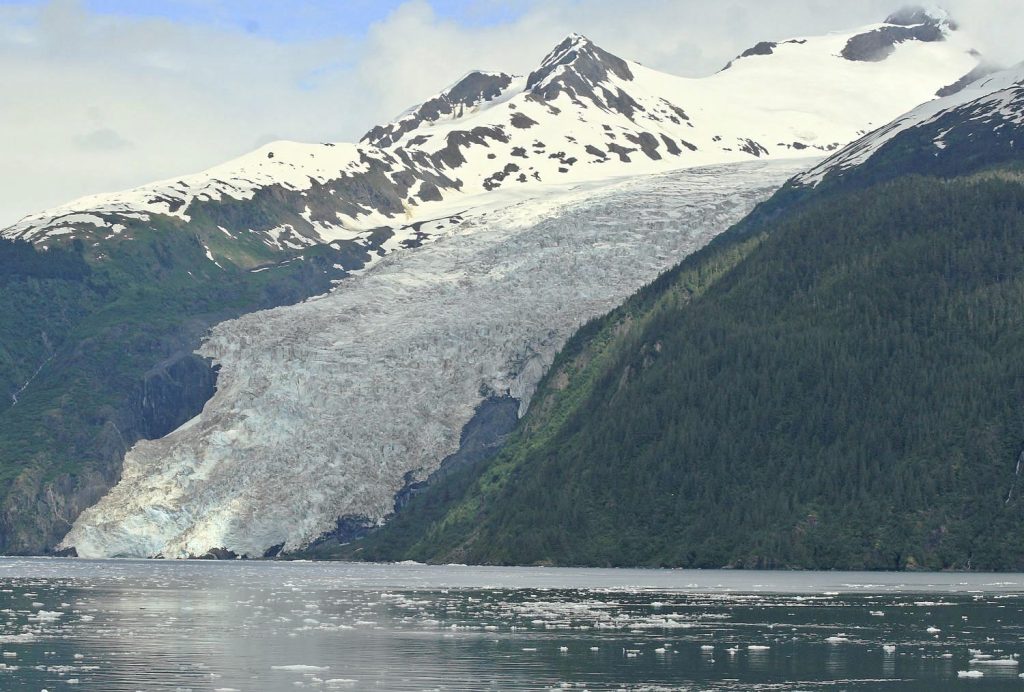
Wildlife in the Wild
When you are ready to say goodbye to this most unique community, there’s only one direction to go. Head back through the Whittier Tunnel, but save at least an afternoon for one final adventure on this particular trek. The Alaska Wildlife Conservation Center is about 20 minutes away, located close to Girdwood on Seward Highway.
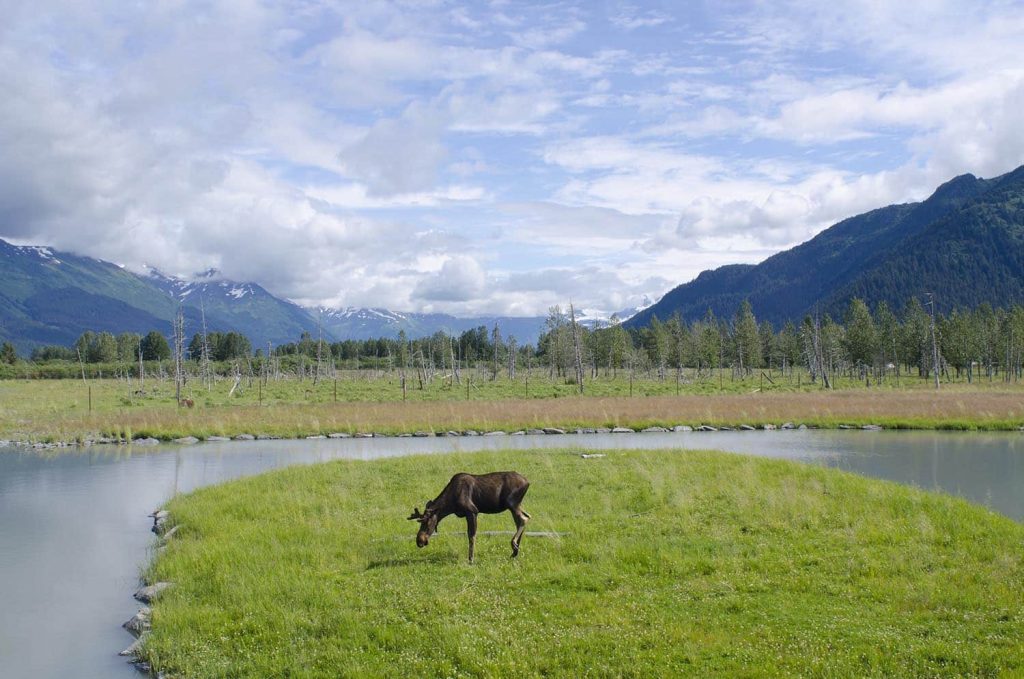
Wildlife that has been injured is rehabilitated there, and those that can’t return to the wild live out their days in their own environments: moose have acreage with their own riverfront property, and bears enjoy the comfort of cozy dens when hibernation sets in. You can walk through this huge outdoor park, viewing virtually every wild animal Alaska has to offer. Grizzly to black bears, bison, caribou, musk ox, and elk, all call this home. You’ll get an up close and personal experience with these animals unlike any other. So, if you haven’t seen enough wildlife in your explorations across the state thus far, this visit should fill in the gaps for you.
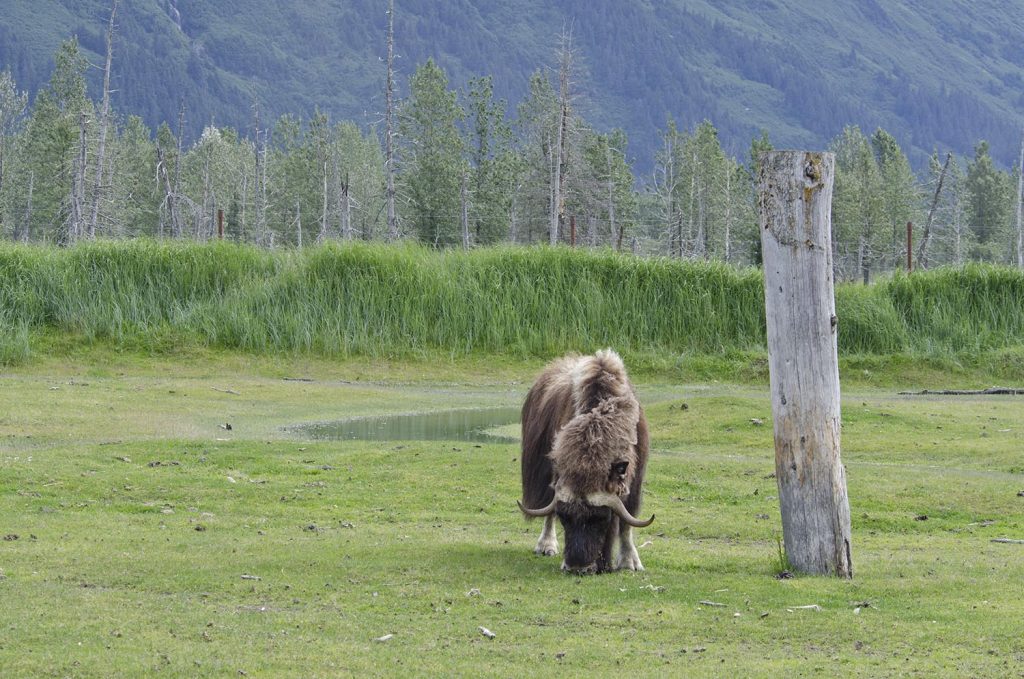
Explore More of Alaska
Be sure to join us for more adventures across The Last Frontier in the coming weeks!
Author’s Note: If you will be driving through Alaska and/or Canada please consider purchasing a current copy of “The Milepost.” It is a travel guide that will list necessities (like gas stations) and amenities (like lodging) throughout Alaska and the western Canadian provinces by milepost marker. This is a prerequisite for traveling in the area, as distances between service stations and grocery stores can be hundreds of miles in many cases. Another piece of knowledge gleaned from “The Milepost” are the hours (and seasons) of operation of businesses along the route, as many close down during fall and winter.
What do you think of Whittier, Alaska? Leave a comment below!

